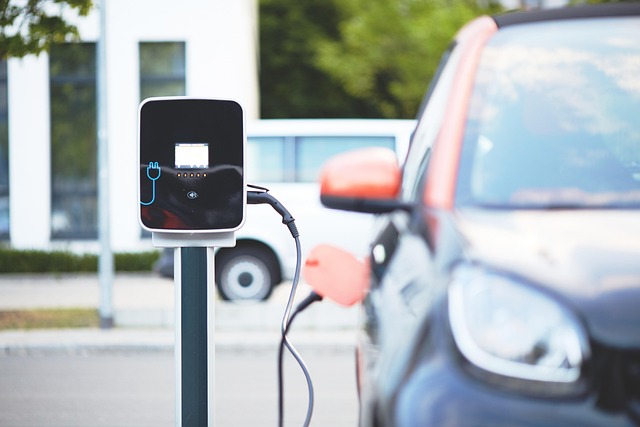Learn how to register your car in California with our comprehensive guide. From understanding the requirements for car registration to obtaining necessary documents, this article covers everything you need to know. Discover the importance of a California VIN verifier and how it streamlines the registration process. By following the step-by-step instructions, you’ll efficiently complete the application and submit your vehicle for registration in no time.
- Understanding the Requirements for Car Registration in California
- Obtaining Necessary Documents for Vehicle Registration
- Using the California Vehicle Identification Number (VIN) Verifier
- Completing the California Vehicle Registration Application Process
- Steps to Submit and Register Your Vehicle in California
Understanding the Requirements for Car Registration in California

Before registering your car in California, it’s crucial to understand the specific requirements and processes involved. The state mandates that all vehicles operating on its roads be properly registered and inspected to ensure they meet safety standards. One critical aspect is the verification of the vehicle identification number (VIN). This unique 17-character code serves as a fingerprint for your car, enabling authorities to track ownership history and verify authenticity.
In California, a VIN inspection is typically conducted by a designated agent or official from the Department of Motor Vehicles (DMV). Traditional methods involve taking your vehicle to an approved inspection station. However, with modern technology, you can now opt for convenient alternatives like mobile VIN verification or inspections. These services allow you to complete the necessary checks remotely, making the process more accessible and efficient.
Obtaining Necessary Documents for Vehicle Registration

Before you start the registration process, make sure you gather all the essential documents. The California Department of Motor Vehicles (DMV) requires specific paperwork for vehicle registration, including proof of ownership and identification. One crucial document is the Vehicle Identification Number (VIN) verifier, which can be obtained through various means. You can opt for a traditional VIN verification at a DMV office or consider using a mobile vin inspection service to have the number checked on-site, making the process more convenient.
Additionally, you’ll need your vehicle’s registration from the previous state (if it was registered elsewhere), a valid driver’s license or state ID card, and proof of insurance. It is also beneficial to have the manufacturer’s certificate of origin (MCO) or a bill of sale if you recently purchased the car. With these mobile vin verification tools at your disposal, ensuring accurate documentation becomes easier, saving you time and potential headaches during the registration process.
Using the California Vehicle Identification Number (VIN) Verifier

Using a California Vehicle Identification Number (VIN) Verifier is a crucial step in the registration process. This tool ensures that the vehicle’s history is accurate and matches the provided information, helping to prevent fraud. Many services offer mobile VIN verifiers, allowing you to conduct a quick and convenient vin inspection right from your smartphone or computer. By inputting the unique 17-character VIN code, you gain access to detailed vehicle data, including past owners, service records, and any reported accidents or damages.
This verification method is essential for both buyers and sellers to make informed decisions. With a mobile vin verification in hand, you can rest assured that the car’s history is transparent and trustworthy. This digital process streamlines the registration procedure, making it easier for California residents to get their vehicles registered efficiently while ensuring the integrity of the information associated with each vehicle.
Completing the California Vehicle Registration Application Process

Completing the California Vehicle Registration Application Process involves several key steps. First, gather all necessary documents, including your vehicle’s registration certificate from the previous state, proof of insurance, and a valid driver’s license. Once you have these, proceed to the California Department of Motor Vehicles (DMV) website to access the online application form. Fill it out accurately, ensuring you include details like your personal information, vehicle specifications, and the current odometer reading.
A crucial component of this process is verifying the Vehicle Identification Number (VIN). This unique code can be checked using a mobile VIN verifier or through a simple online search to ensure the vehicle’s history is clear and it hasn’t been reported as stolen. After completing the form, submit it along with all required documents at your nearest DMV field office. Alternatively, you can opt for a mobile VIN inspection service, which allows for convenience by bringing the assessment directly to you.
Steps to Submit and Register Your Vehicle in California

To register your car in California, start by gathering all necessary documents, including your vehicle’s Certificate of Title (or Proof of Purchase), registration application form, and proof of insurance. Next, locate a designated California Department of Motor Vehicles (DMV) field office or partner location to submit your paperwork.
At the DMV or partner location, you’ll need to present your documents and undergo a Vehicle Identification Number (VIN) inspection using a mobile VIN verifier to ensure the vehicle’s authenticity. After successfully completing this step, staff will process your registration application, including assigning a unique California license plate to your vehicle.
Registering a car in California is a straightforward process once you understand the requirements and have the necessary documents. Utilizing the California VIN Verifier is a crucial step, ensuring your vehicle’s identity and streamlining the application process. By completing each step diligently, from gathering paperwork to submitting applications, you can efficiently register your vehicle and hit the road legally in no time.
